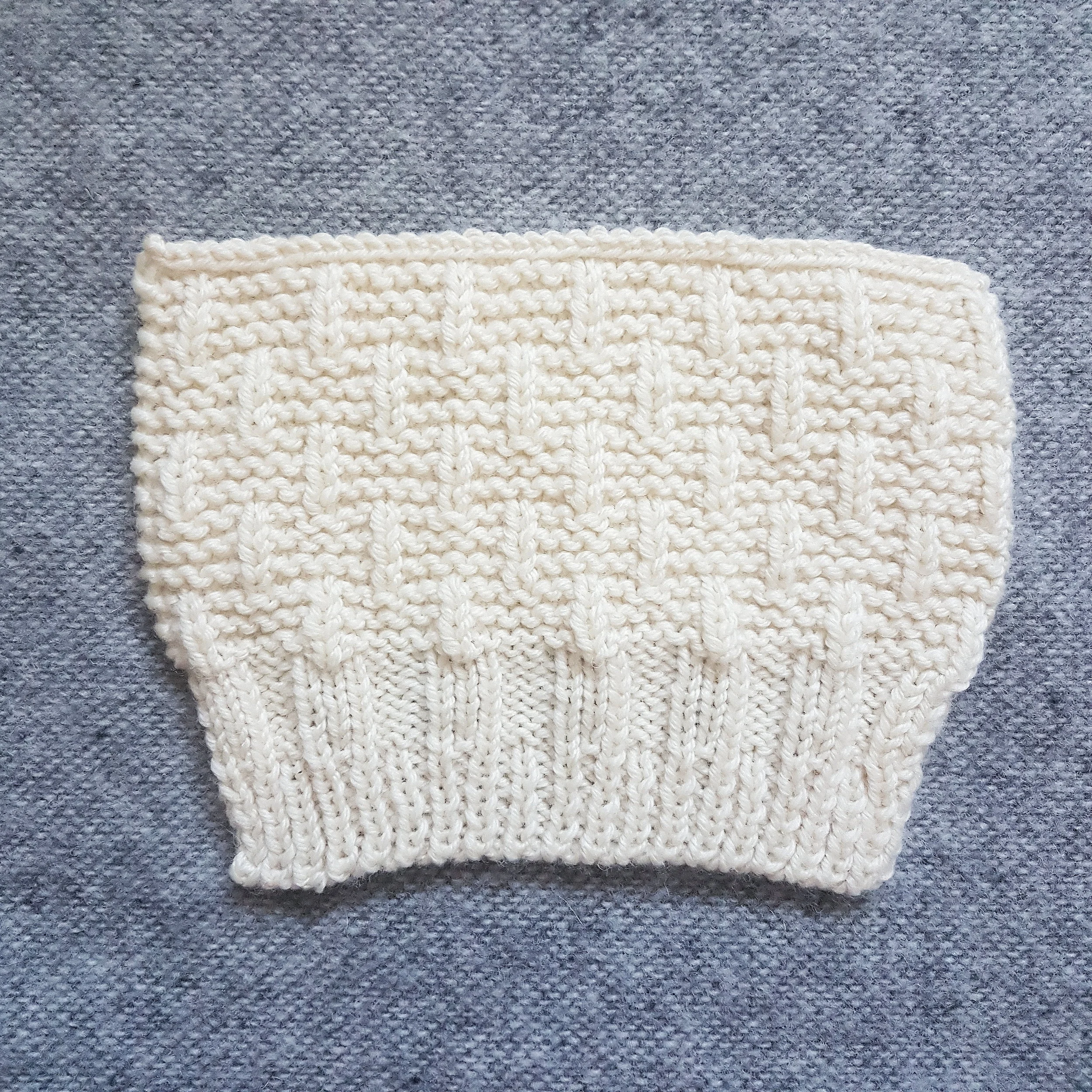How to Design Unique Knitting Stitches
I designed this stitch from scratch last year. It's very effective, but just uses simple double garter stitch.
Whenever I ask people what is holding them back from designing or customising their own knitting patterns, they often say that they are afraid that they won't be able to come up with anything "unique" enough.
I think we've all worried about that before, right? We don't want to step on anyone's toes.
Whilst it can be super fun to design your own stitches from scratch, coming up with unique stitch designs can be as simple as altering pre-existing stitches found in stitch dictionaries!
In today's blog post, I show you an example of a stitch I've customised to show you just how simple it is to come up with unique knitting stitches!
How to Create Unique Knitting Stitches
Find an existing stitch you like
Take a look through your favourite stitch dictionary and find a stitch that appeals to you the most. Don't worry if you don't own one - there are plenty online now!
I chose to work with the Left Diagonal Stitch because I really like working with travelling stitches at the moment and I thought I could play around with that aspect of the fabric even more.
This is the Left Diagonal stitch.
Swatch out the stitch, as is
Before you start customising the stitch, it can be helpful to knit up the stitch as written to give you an idea of how it looks and behaves. It's much easier to come up with ideas as you're knitting.
Before I knitted up my Left Diagonal swatch, I wasn't sure what I would do to customise it. As my swatch grew, I noticed that the stitch almost looked like diagonal cables. This is what inspired my customisation.
Reflect on your swatch
Once you've knitted up the existing stitch, take a look at your swatch and reflect on your favourite elements. Consider how you could exaggerate that part of the stitch or draw more attention to it. Are there parts of the stitch you don't like? How could you improve it?
I really liked the subtle faux cables this stitch created, so I decided to add some 2-stitch cables to this stitch to further exaggerate the movement of the stitch.
Make a chart
I find charting really helpful when I'm trying to express my ideas, as you can see the visual effect of the stitch in advance. If you don't own any charting software, knitter's graph paper is just as good for this job! You can print some out here. If you prefer to just knit from your head, feel free to skip this step!
Charting out my stitch design helped me to figure out where to place the cable crossed in order to get the stitches to flow seamlessly across the fabric.
My new variation on the Left Diagonal stitch
Knit a new swatch
Now that you have your design idea, it's time to knit it up. Sometimes your stitch will come out just as you imagined it and sometimes, it might surprise you! In my case, it didn't come out exactly as I planned - the travelling stitches are too far to the left edge. I think the stitch would be more interesting if they were more central.
Rinse and repeat
One of the biggest mistakes you can make when designing anything new is not giving yourself enough time to play around and develop your idea. You might make 4 or 5 swatches before you settle on your final stitch - that's all part of the fun!
If I were developing this stitch for a new design, I might knit a swatch where the travelling stitches are more central. I might also swap the reverse stockinette for garter stitch to see how it looks! Also, wouldn't this look interesting on a larger scale? I could swatch that up too!
The two stitches compared: the original Left Diagonal stitch and my unique variation on it.
The options for new stitches are endless
What I hope this blog post has taught you is that coming up with something unique doesn't have to be arduous. It can be fun to put our own spin on existing stitches!
Take Anna Maltz, for example. She came up with an extraordinary new technique called "Marlisle"; an unusual approach to stranded knitting, where two colours magically become three by using yarn held double. Neither stranded knitting nor marling yarns are unique, yet Marlisle is unlike anything I've ever seen from handknitters.
This week, take a leaf out of Anna's book and start experimenting with ways to create your own unique knitting stitches.
